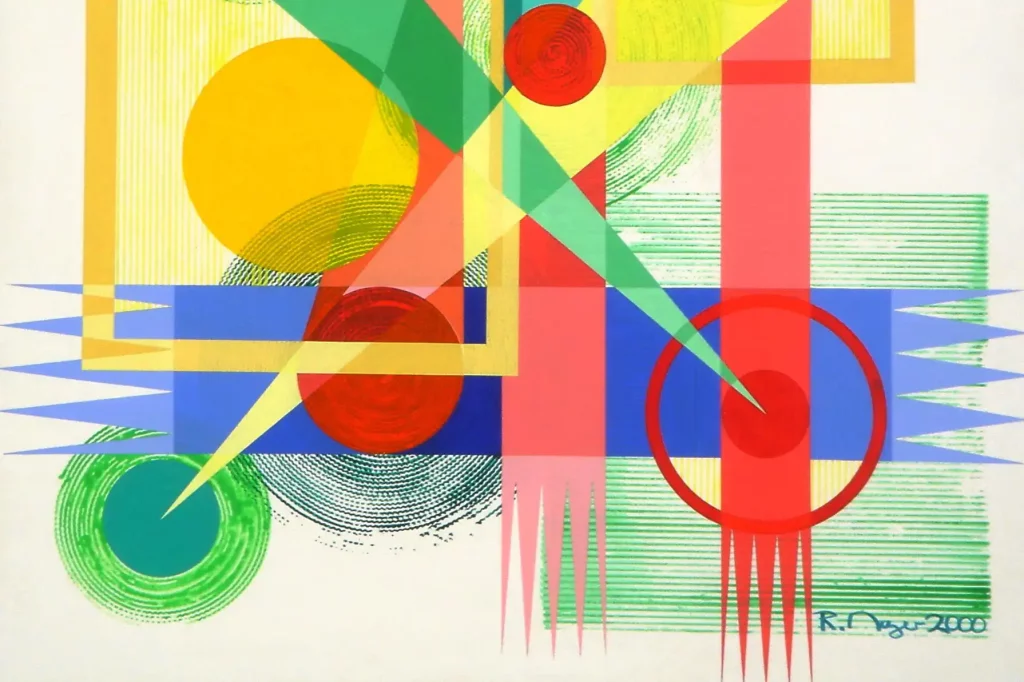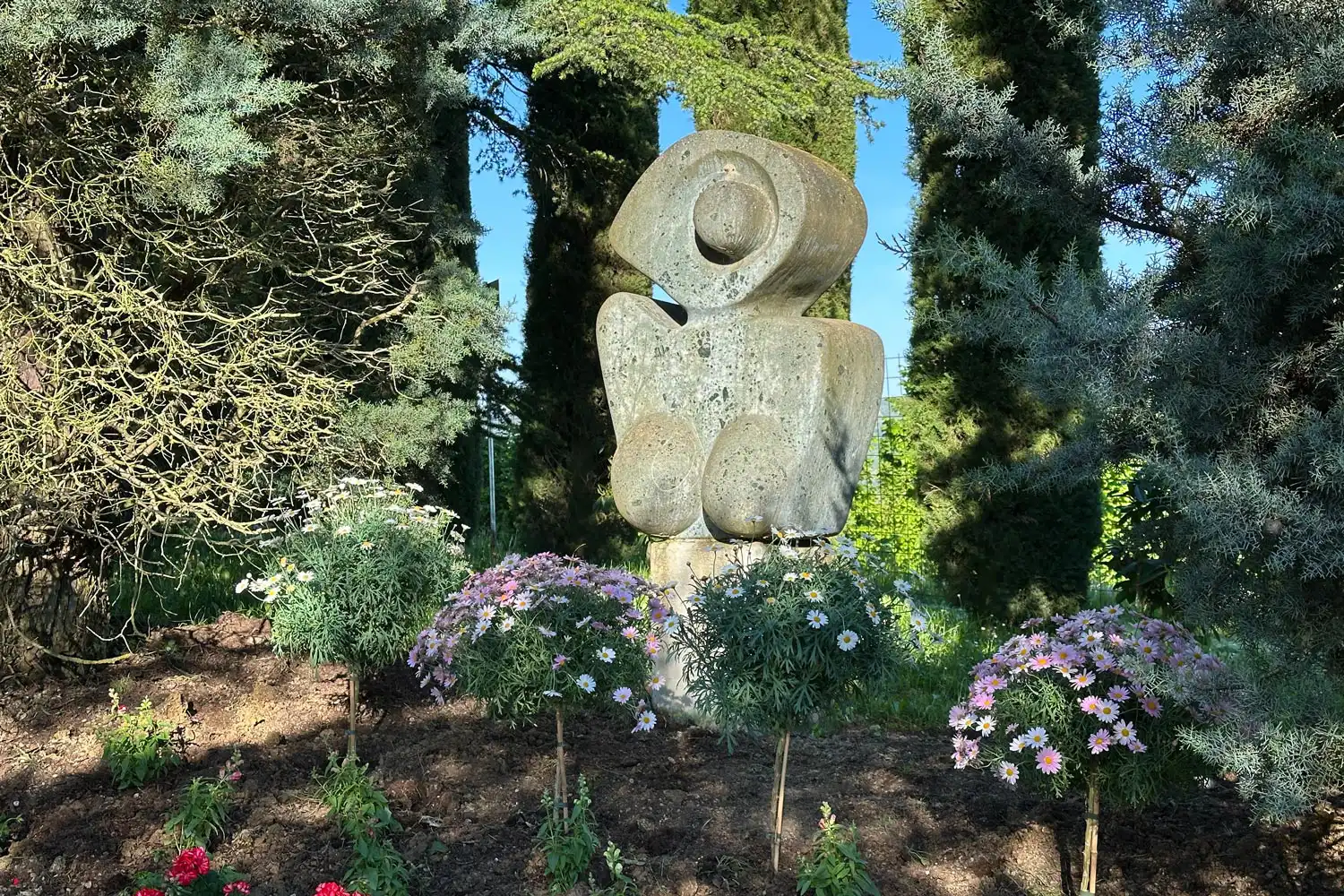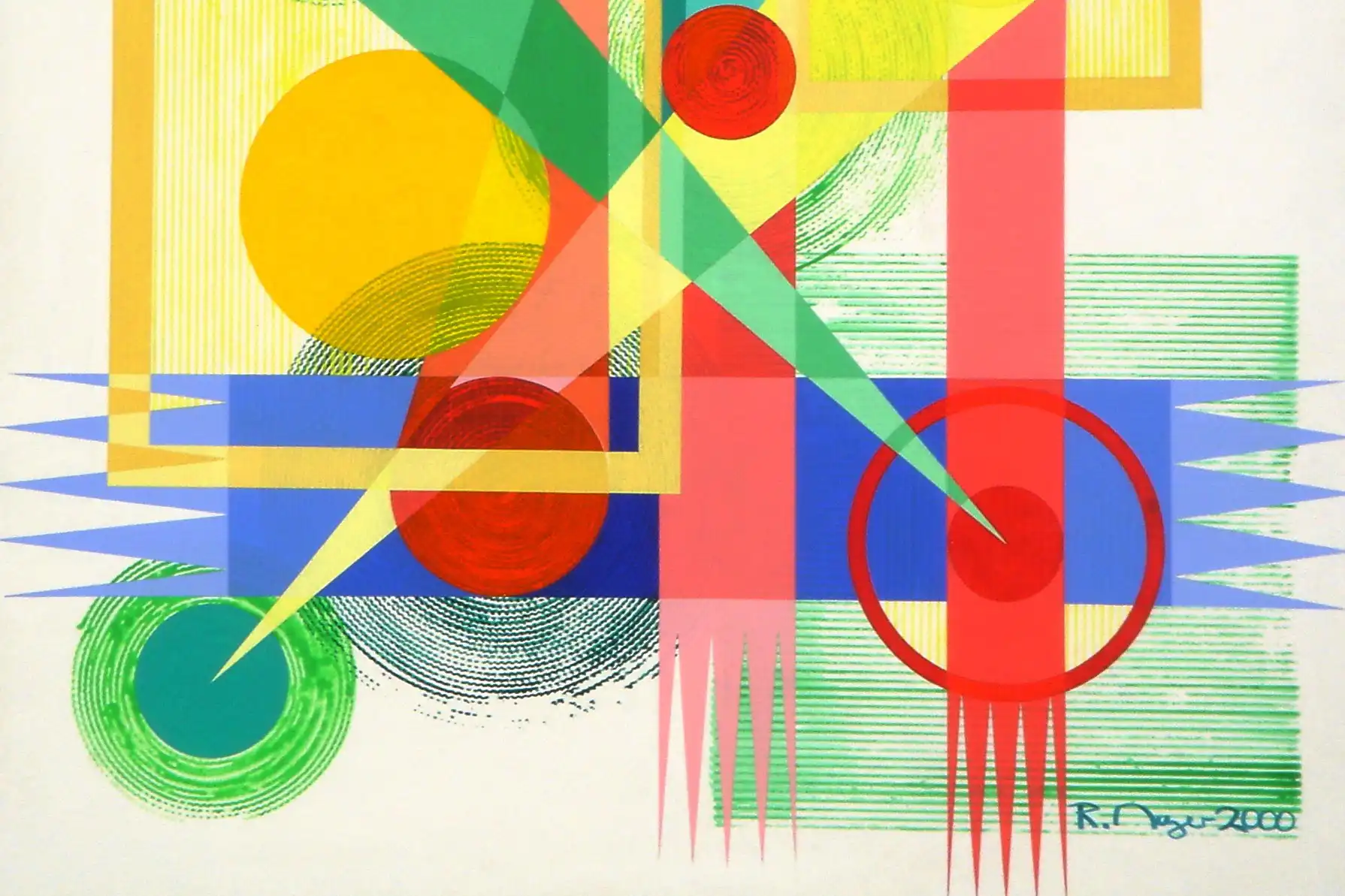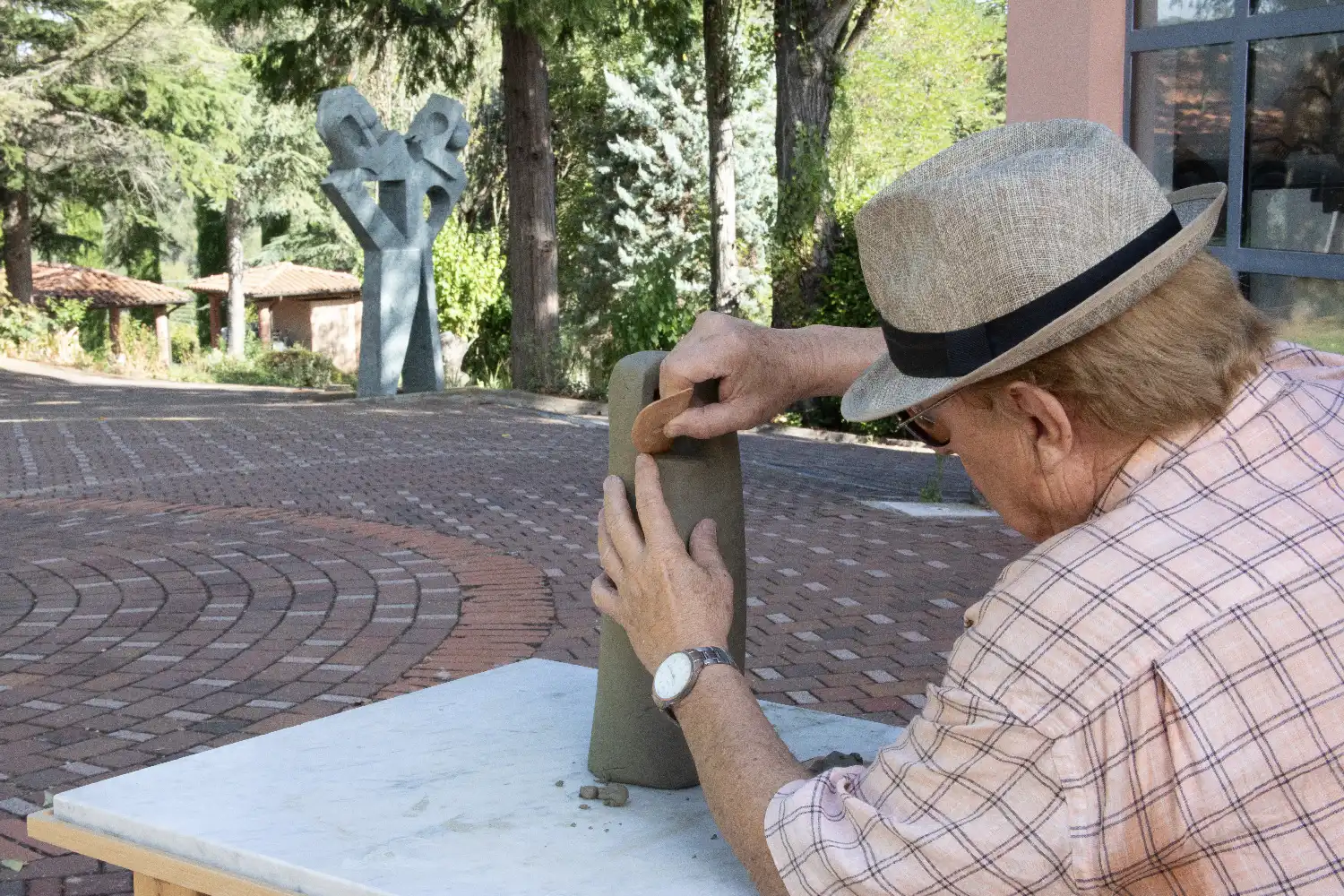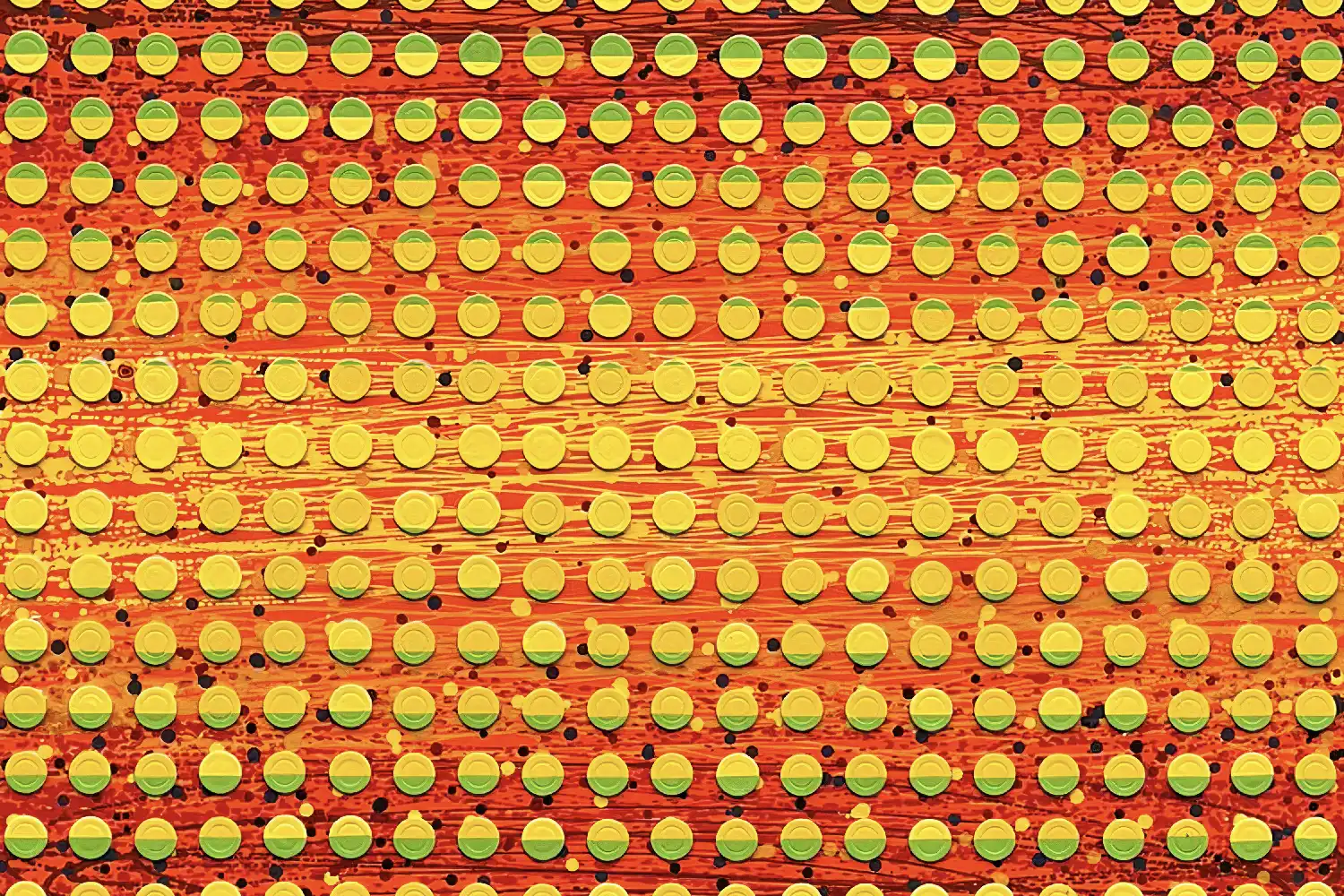With René Mayer, every painting, every sculpture, every visual fragment seems to arise from the same breath: rigor without stiffness, movement without over-emphasis, fidelity to form without dependence on styles. From the very first abstract works he created in the 1970s, after training at the School of Applied Arts in Basel, René Mayer explored what would become the guiding thread of his entire body of work: the tension between order and disorder, between system and intuition. His practice is rooted in an approach where painterly contours and precise architectural are two sides of the same inquiry. This artic-ulation is evident throughout his oeuvre – in the series “Boxes”, as well as in “Finite-ness”, “Eyes”, “Moving Earth”, and in the sculptures of the “Viva Viva” and “Marmor & Granit” series.
Boxes – structure and escape
In this series, René Mayer sets square forms, grids, and circular motifs in tension to pose a simple question: are we protected by the structures that confine us, or prisoners in the name of security? Inspired by his experience in India facing the caste system, the series proposes a visual reflection on the concept of mental and physical confinement, and the possibility of escape. Here, Mayer uses repeated stamps, mechanical stencils, and regu-lar grids to symbolize social rigidity, while juxtaposing them with translucent color, vi-brating circles, or freehand lines to crack the established order. The fluid image-based connotations and the technical graphics do not oppose one another: they interpene-trate to express an ethical tension. Each canvas becomes a hypothesis: how structure holds, and how it gives way.
Moving Earth – nature constrained
The series Moving Earth overlays crumpled papers and mineral colors, creating imagined landscapes, where soft-edged forms clash with geometric cutouts. The folds evoke envi-ronmental fractures and tremors; the imposed triangles or circles recall human pressure upon the earth.
Here, organic matter and textures confront precise forms and symbols of control. One expresses natural movement, while the other suggests constraint. Solar, clashing colors intensify this conflict. Mayer does not illustrate nature: he transposes it into a sensitive cartography where each visual interaction reflects a silent battle between vital forces and imposed frameworks.
Imperceptible Shift – controlled chance
With Imperceptible Shift, René Mayer introduces casino tokens as central motif. They symbolize chance, risk, loss of control. Yet their arrangement remains calculated: align-ments, gradations, rigorous repetitions. Chance becomes a tool of composition, not abandonment.
The confrontation between fluid and geometric form is sharp: bold colors and vibrating fields coexist with an almost algorithmic structure. The eye hesitates between system and fracture. This visual play engages the viewer: what is perceived first, order or disso-nance? Mayer transforms a seemingly arbitrary motif into a visual reflection on our time.
Finiteness – the worn image
In Finiteness, Mayer works with photocopies of exposed bodies, cut out and juxtaposed into graphic collages. These standardized, frozen figures become visual matter more than subject. Here, Mayer purposefully ages the paper, decolorating it in some areas and overlaying paint in others, revealing the erosion of desire and the disappearance of ste-reotypical ideals of beauty as time passes.
Here, the boundary between fluid and geometric dissolves: translucent fields, colored circles, mechanical grids cover bodily fragments. The image becomes an unstable sur-face, oscillating between seduction and erasure. Mayer diverts the language of geometry to question the finiteness of the body, without pathos, and casts a discerning light on a crisis of representation
Viva Viva and Marmor & Granit – from plane to volume
René Mayer’s pictorial coherence extends into sculpture. The “Viva Viva” series, modeled in terracotta and painted with acrylic, carries over the tensions of his canvases: curved forms, verticals, dynamics, colors. They are unique, unreproducible, like drawings pro-jected into space.
Conversely, the “Marmor & Granit” series explores permanence: clay models transposed by specialized workshops, heavy yet precise volumes. Here again, organic and geometric fuse: the sketch becomes polished matter, the line becomes mass. René Mayer seeks neither monumentality nor citation: he affirms the integrity of each form; its silent densi-ty, its presence, its coherence in space.
Conclusion – right form, silent vision
Throughout these series, René Mayer explores the relationship between painterly con-tours and constructed shapes, as a constitutive tension of his language. The free-flowing forms bring matter, breath, vibration; the geometrical lines introduce structure, control, frame. Their confrontation does not produce opposition, but dialectic.
His work, developed over half a century in the shadows before being exhibited, escapes schools and programmatic discourses. It questions our relation to structure, to chance, to time, to constraint. René Mayer composes forms that “hold” – on canvas as in space. A distinct vision, making art a place of attention, lucidity, and thoughtful resistance.

